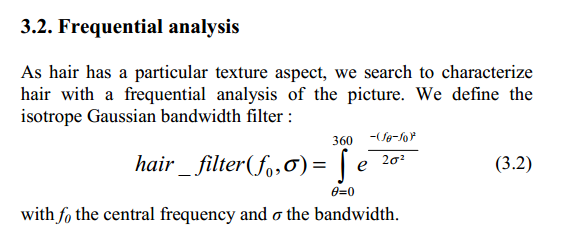Frequential Analysis in openCV
I am going through a research paper and trying to implement it. In the paper it is saying :
That they use the isotrope Gaussian bandwidth Filter, giving a formula and then using the formula they get the frequential map.
My question being, how to apply a particular formula to the matrix image (Section 3.2), and what is the frequential map, as in what format it is?
Link for the paper : Frequential and color analysis for hair mask segmentation
PS : Its difficult for me to write the equation over here, so please bear with me.


